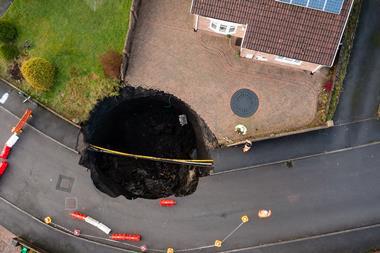’The insurance market needs to radically rethink how it approaches this complex area of claims and fast,’ says head of subsidence
Only one in three subsidence claims submitted to insurers over recent years were not attributable to subsidence, new data published by Claims Consortium Group yesterday (29 November 2023) revealed.

Analysis of such claims submitted to the group during 2018 showed that over 70% were not linked to subsidence, while the repudiation rate for 2019, 2020 and 2021 averaged 75%.
And the most recent subsidence surge event in 2022 looks set to show repudiation levels of at least 60%.
Claims Consortium highlighted that failure to correctly interpret these claims could be costing the insurance market millions of pounds.
“Our analysis shows that there remains a huge disparity between the volume of claims received and those that should be paid,” Greg Rees, head of subsidence at Claims Consortium, said.
”But spotting which claims are genuinely the result of subsidence requires adjusters and surveyors to have real in-depth technical knowledge, a skill set which is in increasingly short supply across the market.”
Rethink
This came after Sedgwick highlighted that it had seen a 300% to 400% rise in subsidence claims volume through August to October in 2018.
Read: Brokers lack urgency and interest in net zero transition – Ecclesiastical Insurance
Read: RSA Insurance partners with charity to help reduce flood risk
Explore more sustainability content here or discover other news stories here
And PricewaterhouseCoopers (PwC) warned earlier this year (11 July 2023) that if extreme weather was to continue – such as levels of sustained heat – subsidence insurance payouts could increase to £1.9bn by 2030.
“The combination of the increasing incidence of subsidence surge events due to climate change and the limited pool of highly skilled subsidence specialists means that the insurance market needs to radically rethink how it approaches this complex area of claims – and fast,” Rees said.
To help achieve this, Claims Consortium recently created a virtual centre of excellence of subsidence experts to drive informed and consistent decision making.
Subsidence trained surveyors visit each claim to gather relevant information – from video captures to floor plans and spirit level measurements.
”Claim information is delivered to the expert hub to make accurate and informed decisions,” the firm said.
”This approach has led to improvements in both efficiency and the time it takes for a claimant to receive an accurate claim outcome, which gives the added benefit of ease of access to the key decision makers improving the customer journey.”
Hosted by comedian and actor Tom Allen, 34 Gold, 23 Silver and 22 Bronze awards were handed out across an amazing 34 categories recognising brilliance and innovation right across the breadth of UK general insurance.




















































No comments yet